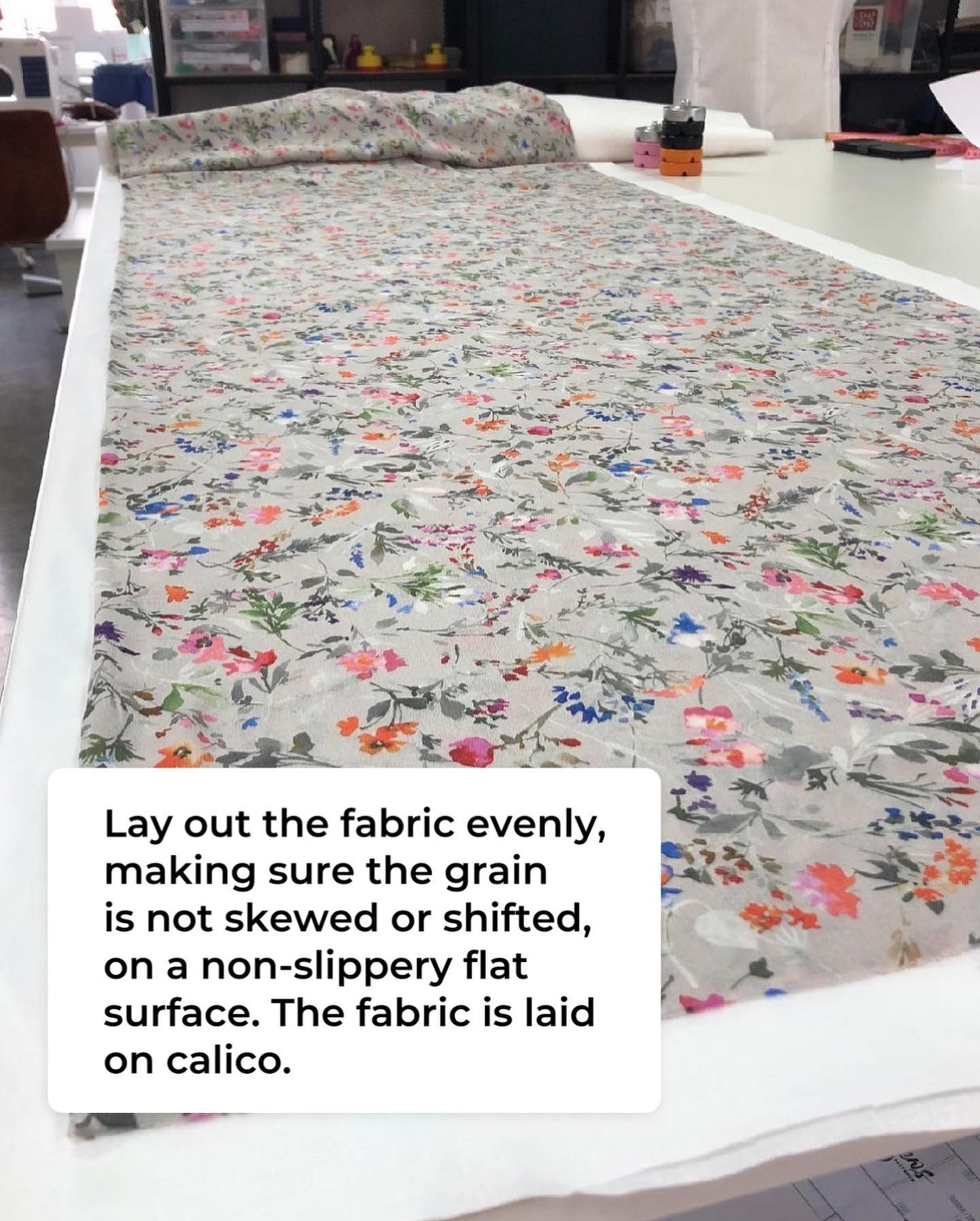Working with slippery fabrics is often a challenge and there are strong reasons why. The tips that we’ve collected in this post will save a good few of your nerve cells.
Use a big work surface. The floor is well suited for this. Your goal is to lay out the entire piece of fabric so that the edges don’t dangle. In this case, the grainline won’t be skewed and the pattern pieces will be cut properly, making sure the garment will fit well. ⠀

Cover the surface with a rough material to reduce slipping. Calico, flannel, and flannelette will work fine.

Use the thinnest, sharpest, and longest pins with a flat head to prevent your piece of fabric from damage. Make sure they don’t leave punctures or snags in the fabric. If there are punctures, secure the pattern pieces with weights and pin the fabric between the pieces only.
Before cutting, smooth out the fabric along the grain, align the selvedges, and pin the layers of fabric along them. Flatten the fabric, lay out and secure the pattern pieces. Pin the fabric between the pieces.
If the paper patterns shift away, use textile patterns. Transfer the paper pieces to calico and cut them out. Textile patterns will hold their shape much better.
If your fabric is very slippery, cut the pieces on the open. It prevents the layers of fabric from misalignment and uneven cuts.
Draw the marks with a water-soluble marker but do a test on a scrap of fabric first, or transfer the marks by hand basting.
You can buy special scissors for slippery fabrics, but we usually just use a pair of well sharpened ones.
Of course, it will be difficult for the first time, but as you become more experienced, the idea of cutting challenging fabrics won’t make you shudder anymore.
Now you can try to sew a light summer dress. Choose the ready-to-make dress pattern here.
Maybe you also need to know:
How to finish paired darts at the same level
How to adjust the dress pattern to a pregnant belly










Здесь пока нет комментариев